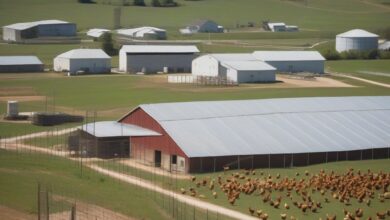Bird Flu Detected at Maryland Poultry Facility: What You Need to Know
Bird Flu Detected at Maryland Poultry Facility: What You Need to Know
The recent detection of bird flu at a poultry facility in Maryland has raised concerns among both farmers and consumers alike. As public health officials work to contain the situation, here’s everything you need to know about the current outbreak, its effects on the poultry industry, and how it could impact your health.
Understanding Bird Flu
Bird flu, also known as avian influenza, is an infectious disease caused by various strains of the influenza virus that primarily affect birds. Some strains of this virus can be particularly severe and lead to high mortality rates among avian species. While bird flu primarily affects birds, it can also infect humans and other animals under certain circumstances.
Common Strains of Bird Flu
There are several strains of bird flu, but H5N1 and H7N9 are among the most well-known for their potential to be dangerous to humans. Transmission of these strains to humans usually occurs through direct contact with infected birds or contaminated surfaces.
The Maryland Outbreak: Key Details
As of January 2025, a case of avian influenza has been confirmed at a Maryland poultry facility. This development has taken the agricultural community by surprise and has prompted immediate action from health officials. Let’s break down the facts surrounding this current outbreak.
Confirmed Cases
- Location: Maryland poultry facility
- Date of Detection: January 2025
- Type of Bird Affected: Details about the specific bird species affected were not disclosed, but it’s likely to be commercial poultry.
Implications for the Local Poultry Industry
This outbreak poses several risks for poultry farmers and the broader agricultural economy in Maryland. Health officials have implemented measures to curb the spread of the virus, which may include:
- Quarantining infected locations
- Destruction of affected poultry to prevent the virus from spreading
- Increased biosecurity measures in other poultry operations
How It Affects Poultry Sales
The detection of bird flu can lead to a temporary reduction in poultry sales, which may affect prices. Farmers may face losses due to the culling of infected birds, and consumers might see higher prices for poultry products in the short term.
Health Risks: What You Need to Know
One of the most pressing concerns for the public is the potential health risks associated with bird flu. Here’s what you should understand about the risks and how to protect yourself:
Risk of Transmission to Humans
While the risk of bird flu spreading to humans is typically low, certain strains can be transmitted through direct contact with infected birds or contaminated surfaces. Key points to consider include:
- Most human cases are linked to close contact with infected birds.
- Proper cooking of poultry products kills the virus.
- Washing hands thoroughly after handling birds or bird products is crucial.
Symptoms of Bird Flu in Humans
If you are exposed to an infected bird, watch for the following symptoms:
- Fever and chills
- Coughing and sore throat
- Muscle and joint pain
- Severe respiratory distress (in serious cases)
Preventative Measures for Farmers and Consumers
Both poultry farmers and consumers can take steps to minimize the risk of avian influenza outbreaks. Here are some key recommendations:
For Poultry Farmers
- Implement Strict Biosecurity Measures: Keep poultry away from wild birds, use protective clothing, and sanitize equipment.
- Monitor Flock Health: Regularly check birds for signs of illness and report any suspicious cases to authorities.
- Vaccination: Vaccinating livestock against certain strains of avian influenza may be recommended.
For Consumers
- Cook Poultry Thoroughly: Ensure that chicken and poultry products are cooked to an internal temperature of at least 165°F.
- Wash Hands: Always wash hands with soap and water after handling raw poultry.
- Stay Informed: Keep up-to-date with information from health authorities regarding any ongoing outbreaks.
Conclusion
The detection of bird flu at a Maryland poultry facility serves as a stark reminder of the importance of vigilance in the poultry industry and for consumers alike. By adhering to strict biosecurity measures and practicing safe food handling techniques, we can collectively minimize the impact of avian influenza outbreaks. As the situation continues to develop, staying informed is key to ensuring health and safety for both poultry farmers and consumers.
“`



